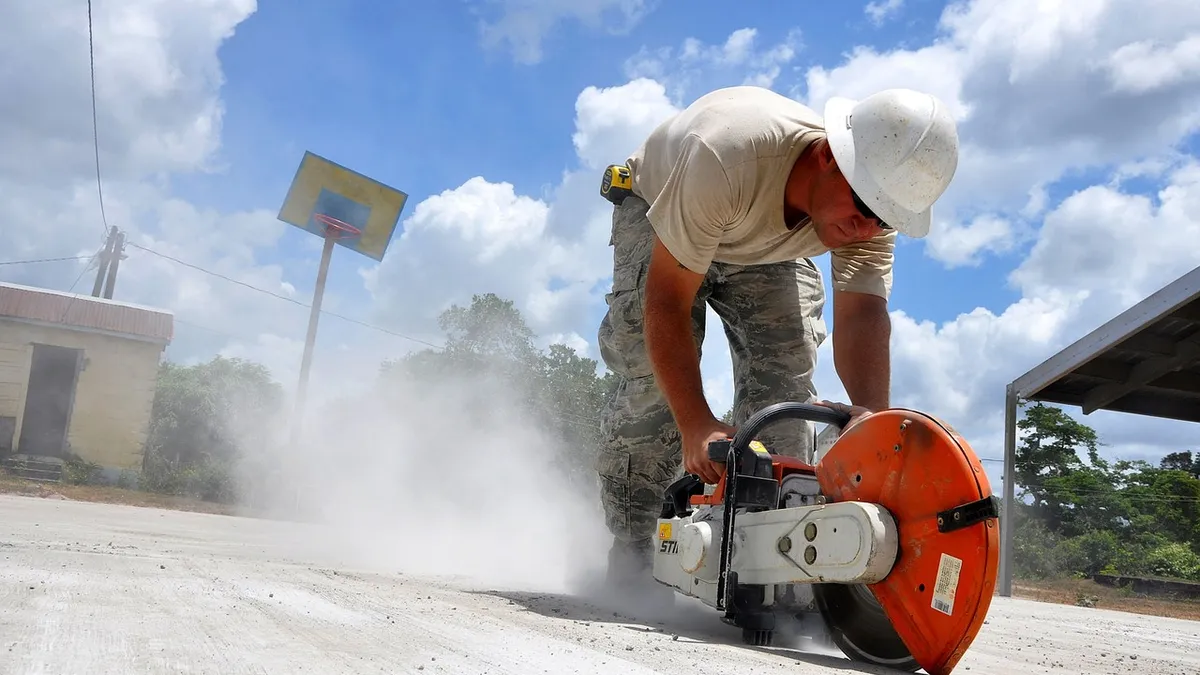The skilled-labor shortage persists in the construction industry, pushing wages up, extending project timelines and putting pressure on builder–trade relations. That’s made the topic consistent fodder for discussion throughout this year’s Design and Construction Week, currently underway in Orlando, FL.
During a three-hour seminar Wednesday morning, builders shared tips for finding and training newcomers and maintaining ties with their trades when labor is hard to find.
Labor will stay tight
Labor was joined by lots and lending as the three factors cited by National Association of Home Builders Chief Economist Robert Dietz during a press conference as essential to the residential construction industry’s health. And they all seem to be in a holding pattern — labor, in particular.
Construction’s job openings rate was 2.7% in November, according to preliminary figures from the Bureau of Labor Statistics released this week, compared to 1.5% in November 2015 and 3.3% this past July.
Economists had predicted that the labor shortage would plateau in 2016, as a slump in the energy markets was expected to route more workers into the construction industry. That didn’t happen at the level anticipated, Dietz said. Instead, the situation persists as housing demand levels continue to rise.
For John Bissett, president of JM Weston Homes in Colorado Springs, CO, the labor shortage has pushed delivery on his company’s typical single-family homes from 90 days at the height of the last building boom to 150 days currently. "We’re not being any lazier, we just can’t get people on the job site," he told attendees at the DCW event.
He’s not alone.
A survey this summer of nearly 1,500 contractors across the U.S. by the Associated General Contractors of America found that nearly seven in 10 respondents are having trouble finding hourly skilled workers. While that figured is a 10-percentage-point drop from a year earlier, three-quarters of those surveyed in 2016 expect to face similar challenges in the coming year. Nearly half of respondents said they’re either raising wages, adding overtime, or both, to keep up.
Jody Kahn, a senior vice president at John Burns Real Estate Consulting told Construction Dive earlier this month that the tight labor market is making it harder to guarantee project delivery schedules, causing builders to be more cautious about the work they take on and when they put homes up for sale. "Builders seem to have accepted that it now takes longer to build a home," she said.
Builders may be playing the waiting game, but they’re not sitting still.
Training programs expand, find new targets
Vocational tech is making a comeback. That’s due in great part to organizations like the Home Builders Institute, a career-training organization developed by the NAHB in 1983 that today partners with industry groups, high schools, correctional facilities and even the Department of Labor to offer training in the skilled trades, pre-apprenticeship certifications and job placement to help attract and retain workers for the construction industry.
Its president and CEO, John Courson, told attendees at the DCW session that the group has a reach of more than 13,000 students at any time in the classroom and in the field. "We want [students] to know what it’s like to be in this business. You can’t learn this business on a computer, in a textbook, in a classroom," he said. "I want the last day of training with HBI to be just like the first day on their new job."
In high schools, where shop classes have largely been phased out due to high costs associated with staffing and equipment maintenance as well as less room for the sizeable footprint required, trade education is seeing renewed interest.
"We wanted to make sure that kids knew that being in the industry was actually a pretty honorable thing."

John Bissett
President of JM Weston Homes
Bissett discussed the Housing and Building Association of Colorado Springs’ efforts to solve its own labor shortage in the long-term by founding the Career Building Academy. The program brings the association together with the HBI and local high schools to subsidize the latter’s renewed vocational tech programs.
Working with the local buildings department in Colorado Springs, the group came up with an opt-in contribution of $6 to $50 on building permits and, so far, have raised $9,000 to $10,000 per month, including individual donations, since launching in January 2015.
"We wanted to make sure that kids knew that being in the industry was actually a pretty honorable thing," he said. So far, 345 students are involved in Career Building Academy programs across five schools.
The CBA program draws attention to the importance of funding. At DCW on Wednesday, the NAHB, the National Kitchen and Bath Association, the National Association of the Remodeling Industry and SGC Horizon launched the Skilled Labor Fund. The program, which is administered by the National Housing Endowment, aims to raise $5 million in its first year to fund scholarships for trade education. The fund isn't restricted, so the money can be dispersed as needed.
"The boost is something we sorely needed," NAHB CEO Jerry Howard said during a press event, adding later than it takes roughly 18 months to fully train an individual in the construction trades through programs like the HBI's.
Builders shape up as better trade partners
While sourcing labor is a major challenge, retaining workers today is also difficult. Tim O’Brien, president of Tim O’Brien Homes in Milwaukee and Madison, WI, said his company established trade councils — or regular meetings led by the company's trade partners — to help his team understand how they can best serve their trades. "I learn so much from these guys about what it takes to do the job right the first time," he said.
Other tactics include helping grow partner businesses, getting involved with local schools and technical colleges to help train the next generation of construction labor, and improving schedule accuracy and job preparedness among the team.
“[The systems and processes] can work great for you, but if they don’t work for your trade partner, you’re probably losing money, you just don’t know it yet."

Brian Hall
Vice president of construction, Classica Homes
Brian Hall, vice president of construction at Classica Homes, in Charlotte, NC, said that relationship management is key. "As a group, we don’t swing one hammer, we don’t plumb anything. We manage a process," he said.
The company holds twice-annual meetings with its trades to discuss the company’s mission and values and review actual versus projected sales, starts and closures, as well as current and upcoming land positions and model and design needs. The goal is to help trades plan ahead, knowing whether there’s work in the pipeline and what those projects will likely entail.
Efficient systems and processes are also important. Each of Classica's trade partners has access to an online file containing documents like schedules, vendor and purchase orders, warranty work orders, base plans, lot plans and other communications.
"[The systems and processes] can work great for you, but if they don’t work for your trade partner, you’re probably losing money, you just don’t know it yet," he said.
Chris Clare, a product development director at DSLD Homes in Louisiana, said his company has a no back-charge policy to encourage trade partners to keep communication open, even in the event of an error. "While there is a cost to that, there’s also a benefit in that we have a [trade] who’s loyal to us," he said. "We’re open to the risk of having to cover their deficiencies, just like they cover ours."
The company aims to keep an even flow of production, allowing trades to plan alongside them and getting trades' input on home plans during the design phase rather than waiting for issues to arise on the job site.




















